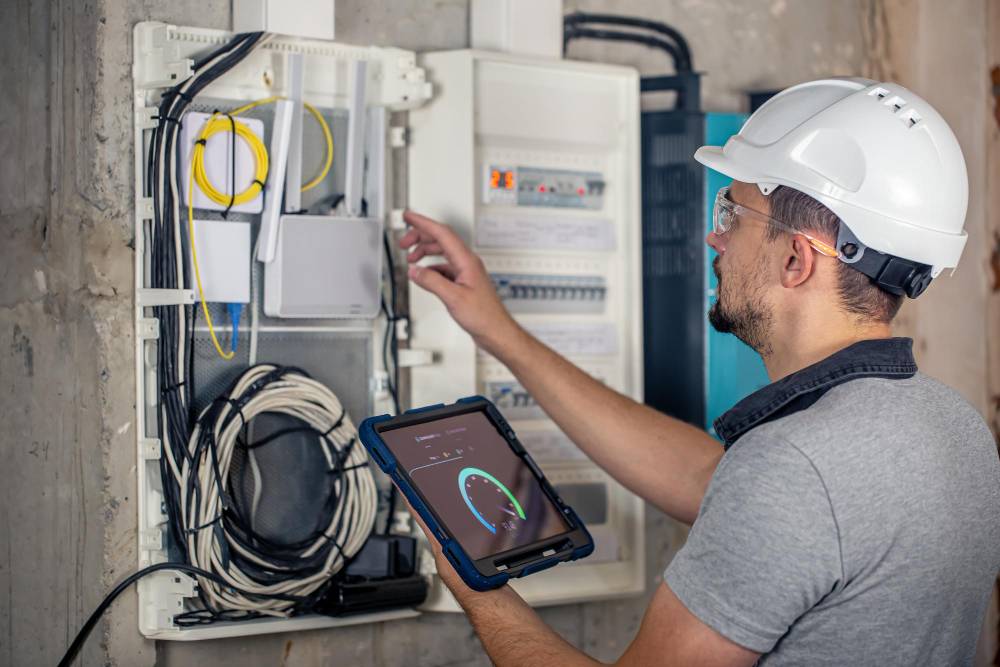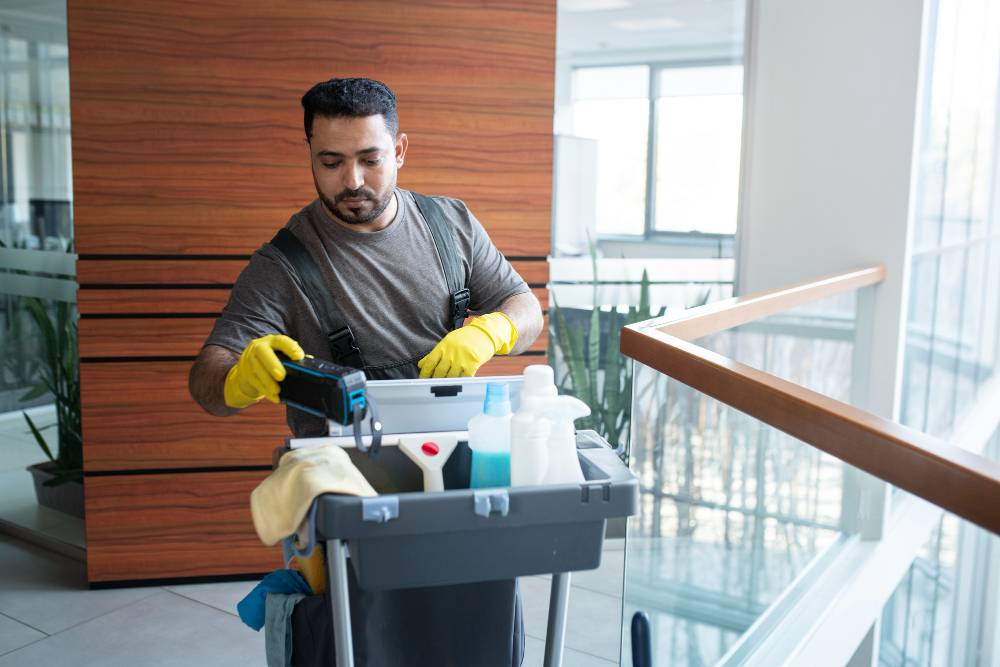Emergency repairs in commercial buildings can be costly, disruptive, and even hazardous if not managed correctly.
From plumbing failures to electrical malfunctions, HVAC breakdowns, or structural damage, unexpected issues can significantly impact daily operations.
Knowing how to handle emergency repairs effectively can minimize downtime, prevent further damage, and ensure the safety of employees, tenants, and visitors.
This guide explores the essential steps for responding to emergencies in commercial buildings and strategies for mitigating risks.
Understanding the Importance of Emergency Repair Readiness
Commercial buildings house businesses, offices, retail stores, and industrial operations that rely on functional infrastructure for smooth daily operations.
When an emergency occurs, immediate action is required to prevent loss of productivity, protect assets, and ensure compliance with safety regulations.
A well-prepared approach to emergency repairs helps businesses:
- Reduce financial losses caused by operational disruptions
- Prevent minor issues from escalating into major, costly problems
- Protect occupants and assets from harm
- Maintain compliance with local building codes and safety regulations
Having a structured plan in place before emergencies happen is crucial to effective crisis management.
Common Emergency Repairs in Commercial Buildings
Commercial buildings can face various emergency repair needs, including:
- Plumbing Failures – Burst pipes, leaking water lines, clogged drains, or sewage backups can cause extensive water damage and disrupt operations.
- HVAC System Breakdowns – Sudden heating or cooling failures, especially in extreme weather conditions, can make a building uncomfortable or even unsafe for occupants.
- Electrical Malfunctions – Power outages, faulty wiring, and circuit overloads can create fire hazards or shut down essential systems.
- Roof Leaks and Structural Damage – Storms, heavy rainfall, or accidents can lead to roof collapses, leaks, or structural failures that require immediate attention.
- Fire and Safety System Failures – Malfunctioning sprinklers, alarms, or emergency exits pose serious risks to occupants and may result in code violations.
Each of these emergencies demands a swift, well-organized response to prevent escalation and ensure business continuity.
Steps to Handle Emergency Repairs Effectively
1. Establish an Emergency Response Plan
Every commercial building should have a documented emergency response plan that outlines:
- Who to contact in case of an emergency (facility managers, contractors, emergency services)
- Evacuation procedures if required
- Roles and responsibilities of building management and maintenance staff
- Procedures for communicating with tenants and employees
A well-prepared plan ensures that all stakeholders know what to do when an emergency occurs, reducing confusion and response times.
2. Identify and Contact the Right Professionals
Time is critical when handling emergency repairs. Building managers should maintain a list of trusted vendors and service providers who can respond quickly to emergencies. These should include:
- 24/7 plumbers and electricians
- HVAC repair specialists
- Roofing and structural repair contractors
- Fire safety system technicians
- Emergency restoration and cleanup services
Establishing relationships with reliable professionals before an emergency occurs ensures fast service and potentially better pricing.

3. Assess the Severity of the Damage
Before taking action, it’s important to evaluate the extent of the issue. Some emergencies require immediate action, while others may allow time for proper assessment and planning. Key questions to consider:
- Does the issue pose an immediate safety hazard?
- Will it disrupt business operations if not addressed immediately?
- Can temporary solutions be implemented while waiting for full repairs?
For example, a small water leak may be temporarily contained, but a burst pipe flooding multiple floors requires immediate intervention.
4. Implement Temporary Fixes When Necessary
In cases where immediate professional help is unavailable, temporary solutions can help mitigate the damage:
- Shutting off water valves for plumbing emergencies
- Using backup power generators during electrical failures
- Applying tarps or temporary patching for roof leaks
- Increasing ventilation or using portable heaters/coolers for HVAC failures
These stopgap measures prevent further damage until permanent repairs can be completed.
5. Ensure Safety and Compliance
Safety should always be the top priority in emergency repair situations. Building managers must ensure that repairs are done in compliance with:
- Local building codes – Work must meet regulatory standards to avoid fines and liability issues.
- OSHA (Occupational Safety and Health Administration) requirements – Workers performing repairs should follow safety protocols to prevent accidents.
- Fire and electrical safety codes – Repairs should not create additional risks, such as exposed wiring or blocked emergency exits.
If a repair affects tenant or employee safety, consider restricting access to affected areas until the issue is resolved.

6. Communicate With Occupants and Stakeholders
Clear communication is crucial in emergencies. Keep building occupants, business owners, and stakeholders informed about:
- The nature of the emergency
- Estimated repair timelines
- Temporary solutions or alternative workspaces (if needed)
- Safety measures in place
Using emails, signage, or digital alerts ensures that everyone is aware of the situation and can make necessary adjustments.
7. Document the Repair Process
Maintaining records of emergency repairs is essential for:
- Insurance claims – Documentation of damage, repair costs, and invoices can support compensation claims.
- Maintenance planning – Identifying recurring issues can help prevent future emergencies through proactive maintenance.
- Legal compliance – Keeping records ensures that repairs are conducted according to industry regulations and building codes.
Take photos before and after repairs, keep invoices, and note any recommendations from contractors for future improvements.
8. Review and Improve Emergency Procedures
Once the emergency is resolved, conduct a post-incident review to assess how the situation was handled. Ask questions such as:
- Were response times fast enough?
- Did vendors provide satisfactory service?
- Were there any gaps in the emergency plan?
Use this information to refine emergency preparedness strategies, update response plans, and improve vendor selection for future incidents.
Preventative Strategies to Reduce Emergency Repairs
While emergencies can’t always be avoided, proactive maintenance reduces their likelihood and severity. Key preventative strategies include:
- Routine inspections – Regularly check the plumbing, electrical systems, HVAC units, and building structures for early signs of damage.
- Scheduled maintenance – Servicing equipment before failure occurs helps avoid costly emergency repairs.
- Weatherproofing – Preparing for seasonal changes (e.g., clearing gutters, sealing windows, maintaining HVAC systems) minimizes weather-related damages.
- Backup systems – Installing generators, surge protectors, and emergency lighting reduces operational disruptions.
Investing in regular maintenance may seem costly, but it significantly lowers the risk of unexpected emergencies and prolongs the lifespan of building components.
Conclusion
Emergency repairs in commercial buildings require preparation, swift action, and clear communication.
Building managers can minimize disruptions and ensure occupant safety by establishing an emergency response plan, working with reliable vendors, and implementing temporary fixes when needed.
Additionally, investing in preventative maintenance is one of the most effective ways to reduce the frequency and severity of emergency repairs.
Taking a proactive approach will protect the building’s infrastructure and save time, money, and stress in the long run.



